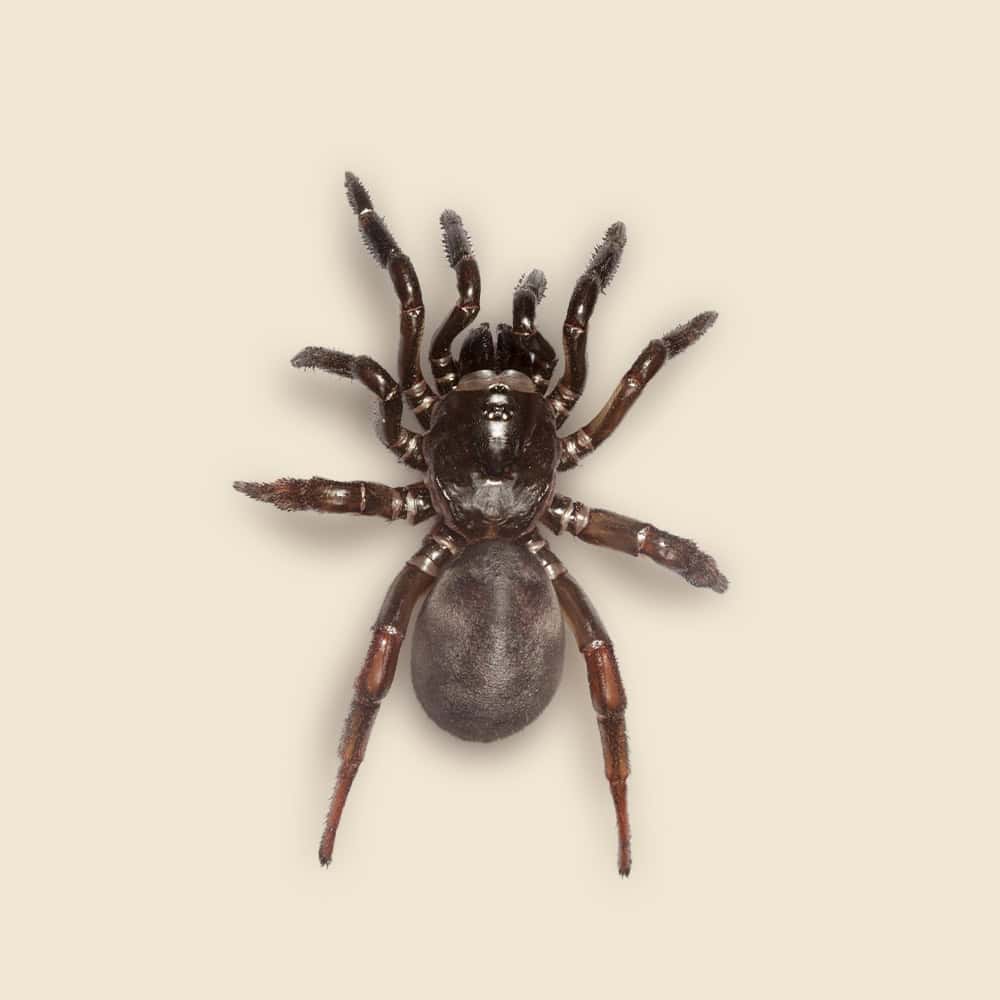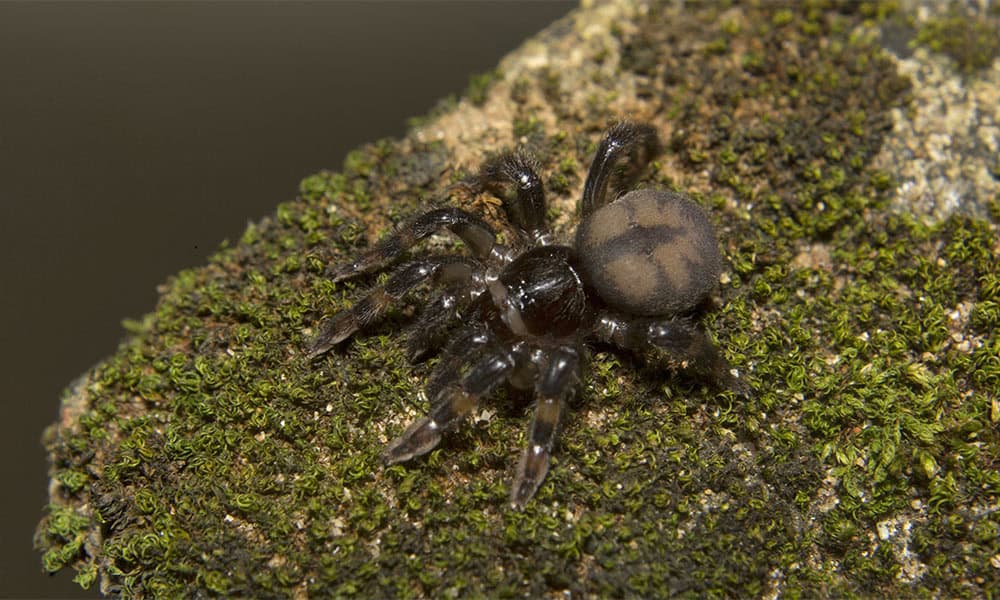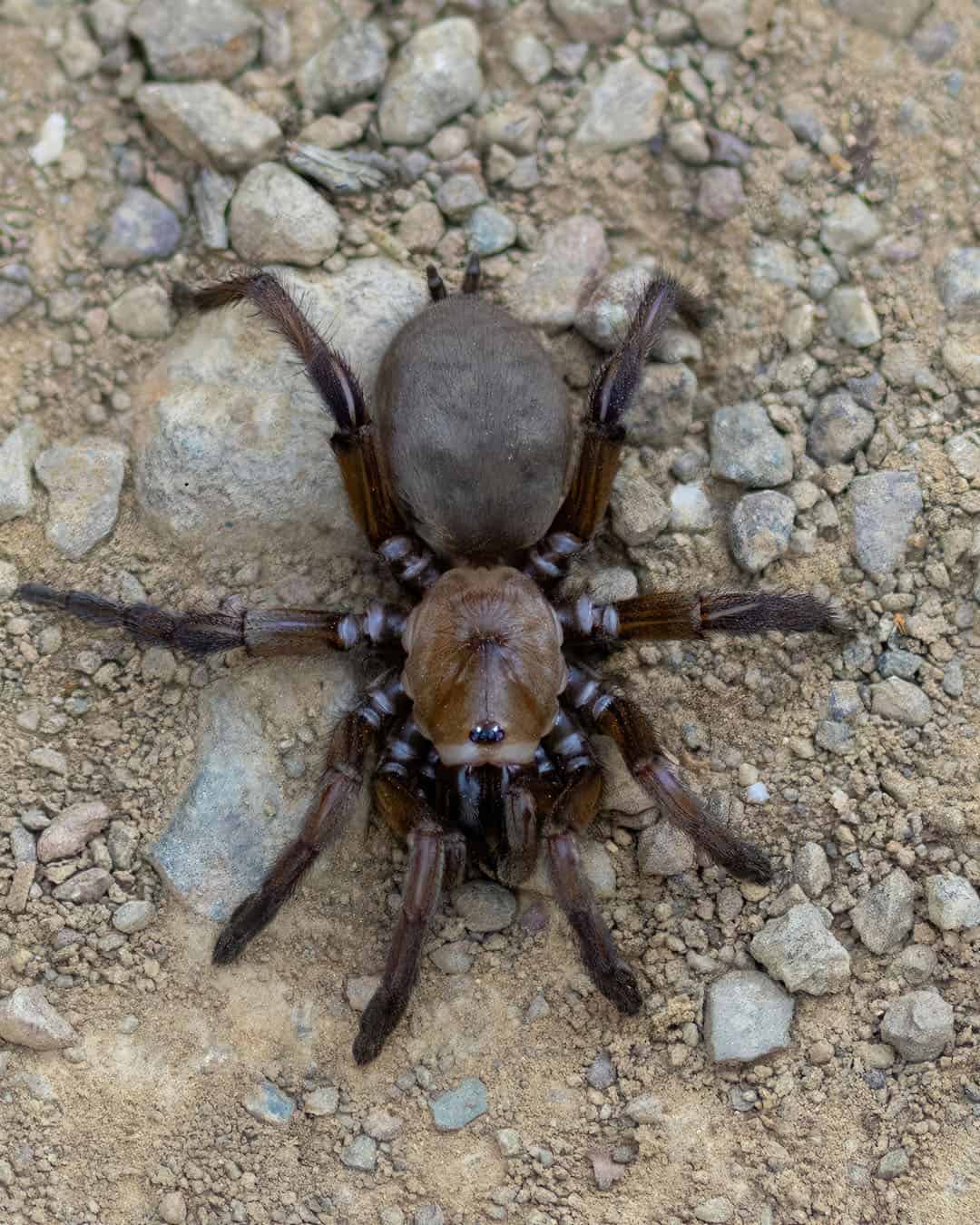Trapdoor Spider Facts & Information
Trapdoor spiders are fascinating arachnids known for their burrowing behavior and hidden, camouflaged webs. These spiders create burrows in the ground, lining them with silk and covering them with a hinged "trapdoor" to ambush passing prey. While they pose no significant threat to humans, their presence can be unsettling, especially in garden areas.

Ctenizidae
What You Need To Know About Trapdoor Spiders
What do trapdoor spiders look like?
Trapdoor spiders are medium to large arachnids, typically ranging from 1 to 3 inches in body length. They have stout, hairy bodies and are usually brown or black in color, helping them blend into their surroundings. Their most distinctive feature is their robust legs and a specialized, rounded abdomen that assists in burrowing.
What do trapdoor spiders eat?
Trapdoor spiders are carnivorous, preying mainly on insects and other small invertebrates. They use their excellent sense of vibration to detect prey moving nearby, then swiftly ambush them as they approach their burrow entrance.
What sort of habitat do trapdoor spiders live in?
Trapdoor spiders are typically found in soil, leaf litter, or under rocks and logs. They create silk-lined burrows with a camouflaged lid that resembles the surrounding ground, providing both shelter and a trap for unsuspecting prey. These burrows are often located in gardens, grasslands, or forests.
How do trapdoor spiders commonly behave?
Trapdoor spiders are secretive and primarily nocturnal. They spend much of their time hidden inside their burrows, waiting patiently for prey to pass by. When they detect movement, they quickly open their trapdoor and pounce on their victim. Despite their fierce hunting tactics, they are generally non-aggressive toward humans.
Did you know this about trapdoor spiders?
Trapdoor spiders are remarkable builders, creating elaborate silk-lined burrows with lids that can be sealed tightly. They are also known for their unique method of hunting; they wait for vibrations on the surface to indicate the presence of prey and then launch a surprise attack! While their bites are venomous, they are rarely harmful to humans and prefer to avoid confrontation.
Understanding Trapdoor Spider Infestations
Understanding trapdoor spider infestations helps in managing them effectively. These spiders are usually dark brown or black, with thick bodies and legs suited for digging. They spend most of their time underground in burrows, emerging primarily at night to capture insects and small arthropods. Though rarely seen, they may occasionally build burrows in landscaped areas close to homes, particularly in gardens or under rocks.

How Hearts Handles Trapdoor Spider Treatment
Hearts Pest Management employs an integrated pest management approach to handle Trapdoor Spider infestations.
Trapdoor Spider Inspection
Trapdoor Spider Treatment
Trapdoor Spider Prevention
Educational Resources

Think You Might Have a Trapdoor Spider Infestation?
At Hearts Pest Control, we understand the challenges associated with Trapdoor Spider infestations and are here to provide professional solutions tailored to your needs. Flourishing in warm and humid climates, they are prevalent in many regions, including San Diego County, Orange County, and Los Angeles County.